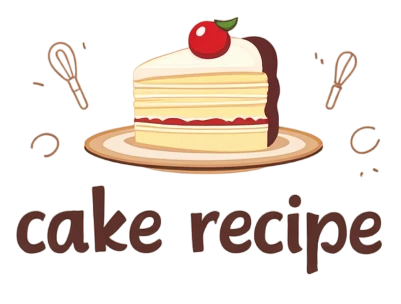Mastering the Art of Sponge Cake: Tips for Fluffy Perfection
Sponge cake is a timeless classic in the baking realm, celebrated for its light, airy texture and delightful versatility. Whether served plain or adorned with luscious frosting and fresh fruits, it remains a favorite for numerous occasions, from birthdays to weddings. The ease of preparation and the satisfaction of baking make sponge cake a beloved choice for both novice and experienced bakers alike.
1. Understanding Sponge Cake
Sponge cake is crafted from a straightforward combination of eggs, sugar, flour, and sometimes a touch of fat like butter or milk. Its variations are abundant, each offering unique characteristics.
- Genoise is known for its rich taste and is often used in layered cakes.
- Chiffon combines the richness of butter with the lightness of an angel food cake, making it incredibly moist.
- Angel Food is a fat-free option made primarily from egg whites, perfect for those seeking a lighter dessert.
The versatility of sponge cake allows it to be enjoyed in countless forms, making it a favorite in many cultures.
2. The Science Behind Sponge Cakes
The magic of sponge cake lies in the science of its ingredients:
- Eggs provide structure and aeration, helping the cake rise.
- Sugar not only sweetens but also adds moisture and stability to the batter.
- Flour gives the cake its body.
The process of incorporating air during mixing is critical; properly aerating the batter ensures a light and fluffy texture. Understanding this balance can significantly enhance your baking results.
3. Essential Tools for Perfect Sponge Cake
- Mixing bowls – Opt for stainless steel or glass for better mixing.
- Electric mixers – A stand mixer or hand mixer will save time and effort.
- Spatulas – Silicone spatulas are ideal for folding and scraping the batter.
- Quality cake pans – Choose light-colored, non-stick pans to ensure even baking.
The right equipment can make a significant difference in your baking experience. Light-colored pans help prevent over-browning, ensuring your sponge cake bakes evenly and retains its beautiful pale color.
4. Step-by-Step Guide to Baking a Perfect Sponge Cake
Classic Sponge Cake Recipe
Ingredients:
- 4 large eggs
- 1 cup granulated sugar
- 1 cup all-purpose flour
- 1/4 cup unsalted butter, melted
- 1 tsp vanilla extract
Instructions:
- Preheat your oven to 350°F (175°C) and prepare your cake pan by greasing it lightly.
- Separate the egg whites from the yolks, placing them in separate bowls.
- In the bowl with the egg yolks, beat them with half the sugar until the mixture is thick and pale.
- In a different bowl, whip the egg whites until stiff peaks form, gradually adding the remaining sugar to stabilize the meringue.
- Gently fold the meringue into the yolk mixture, being careful not to deflate the eggs, then fold in the flour and melted butter.
- Transfer the batter into the prepared pan and bake for 25-30 minutes, or until a toothpick inserted into the center comes out clean.
- Allow the cake to cool in the pan for 10 minutes before transferring it to a wire rack to cool completely.
5. Common Pitfalls and How to Avoid Them
Baking sponge cake can be tricky, and certain common mistakes can lead to disappointing results:
- Overmixing the batter can cause the cake to turn dense rather than fluffy.
- Using cold ingredients can hinder proper emulsification, so ensure all your ingredients are at room temperature before you start.
- Forgetting to preheat the oven can lead to uneven baking.
Take your time and follow these tips to achieve a perfect sponge every time.
6. Flavor and Texture Enhancements
Take your sponge cake to the next level by incorporating various flavorings.
- A splash of vanilla or almond extract can add depth.
- Citrus zest from lemons or oranges can introduce a refreshing zing.
- Consider layering your cake with whipped cream, fruit preserves, or chocolate ganache to complement the sponge's texture and enhance the overall flavor profile.
The possibilities are endless!
7. Decorating Your Sponge Cake
Let your creativity shine through when decorating your sponge cake!
- Simple icing techniques can add a polished look.
- Fresh fruit toppings and edible flowers can transform a basic cake into a stunning centerpiece.
- Presentation is key; consider using a decorative cake stand or arranging slices aesthetically on a platter to impress your guests.
A well-decorated cake not only tastes good but also looks inviting!
8. Storage and Serving Suggestions
To keep your sponge cake fresh and maintain its delightful texture:
- Store it in an airtight container at room temperature.
- If refrigerating, allow it to come to room temperature before serving for the best texture.
- Pair your sponge cake with a hot cup of tea, rich coffee, or even a scoop of ice cream for a delightful treat.
Conclusion
Baking a sponge cake is not only a rewarding endeavor but also a canvas for your creativity. Don’t hesitate to experiment with different flavors, textures, and decorations. Embrace the joy of baking and enjoy the satisfaction that comes from mastering this classic dessert that has delighted generations.
Call to Action
We would love to hear from you! Share your favorite sponge cake variations, baking tips, or photos on social media. Join our community of passionate baking enthusiasts and inspire others!
